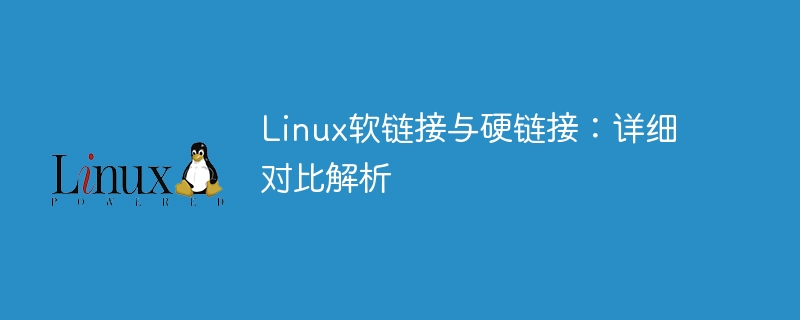

Soft links and hard links in the Linux operating system are common concepts in file systems, and they play an important role in file management and data storage. There are some differences in the use and characteristics of soft links and hard links. This article will compare and analyze the similarities and differences between these two link methods in detail.
1. Soft link (symbolic link)
Soft link, also known as symbolic link, is a special file type that creates a symbolic link pointing to another file. A soft link is actually a shortcut pointing to a file path, similar to the shortcuts in Windows systems. The following are the characteristics of soft links:
ln -scommand, for example:ln -s target_file link_name.2. Hard link (hard link)
A hard link is a pointer to an inode. The inode is a data structure that stores file metadata information in the file system, including file permissions. , size, user, etc. A hard link is actually multiple references to a file in the file system, which share the same inode. The following are the characteristics of hard links:
lncommand, for example:ln target_file link_name.3. Comparison between soft links and hard links
In general, soft links and hard links each have their own characteristics and uses. In practical applications, the appropriate link method can be selected according to specific needs. Soft links are suitable for scenarios that need to cross file systems and point to different types of files; while hard links are suitable for scenarios that implement multiple references to files within the same file system. Through a detailed comparative analysis of soft links and hard links, we can better understand and apply these two link methods and improve file management efficiency.
The above is the detailed content of Linux soft links and hard links: detailed comparison and analysis. For more information, please follow other related articles on the PHP Chinese website!




